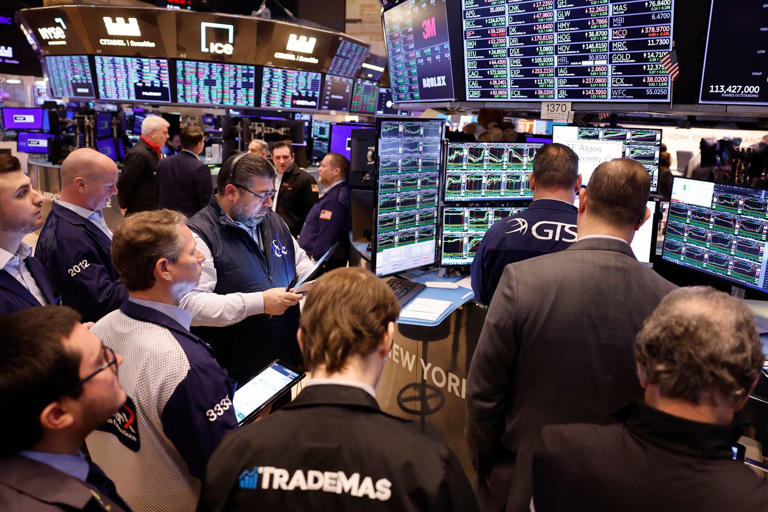Investing decisions often involve grappling with the fear of missing out, commonly known as FOMO. The market’s current state adds complexity to this dilemma, with signs indicating potential frothiness. Despite central bankers tempering expectations for rate cuts, investors are enthusiastically embracing bets on generative artificial intelligence. The Nasdaq’s recent record-breaking close, surpassing its previous peak from November 19, 2021, highlights this exuberance. While the tech giants propelling this surge may not be in a bubble, their elevated valuations suggest that future investment returns could be constrained.
In such an environment, investors may feel inclined to keep their cash in deposits or money-market funds, where returns are relatively attractive, with U.S. offerings currently yielding around 4.9%. However, the downside of this cautious approach becomes apparent when considering potential missed opportunities for substantial gains.
A pertinent insight from the 2024 edition of UBS’s Global Investment Returns Yearbook underscores this dilemma. Historically, the majority of investment returns have been realized during periods when central banks were lowering interest rates or maintaining them at lowered levels. This data suggests that waiting for rates to decline before deploying capital into riskier assets could result in forfeiting significant investment gains.
Therefore, investors face a delicate balancing act. On one hand, the allure of safer, yield-generating assets is understandable given the market’s uncertainty and stretched valuations. On the other hand, the potential for robust returns during periods of accommodative monetary policy underscores the importance of strategic allocation and seizing opportunities when they arise. Ultimately, navigating this landscape requires careful consideration of risk appetite, market dynamics, and long-term investment objectives.
The historical performance of equities during monetary easing cycles versus tightening cycles provides valuable insights for investors. In the United States, equities have delivered real annualized returns of 9.4% during easing cycles, significantly outpacing the 3% returns seen during tightening cycles. A similar trend is observed in the United Kingdom, with equities yielding 8.5% during easing periods compared to 2.9% during tightening phases. Interestingly, there have been instances where cash has yielded more than stocks during periods of rate hikes.
Several factors contribute to the disparity in stock market performance between easing and tightening cycles. While higher inflation during hawkish phases can erode nominal gains, the primary driver of the difference lies in the higher nominal returns experienced during easing cycles.
In contrast to equities, bonds have exhibited minimal returns during periods of rising interest rates. This is predominantly due to inflation eroding the value of bond returns, highlighting the challenges faced by fixed-income investors in such environments.
Research indicates that a significant portion of stock market gains historically occurs in the immediate aftermath of central bank rate cuts. This underscores the importance of timely action and strategic positioning for investors seeking to capitalize on market opportunities.
However, one caveat to consider is the evolving market dynamics. Investors are increasingly factoring in anticipated rate declines into bond market pricing ahead of actual rate cuts. This suggests that equities may have already priced in a substantial portion of the gains from anticipated monetary easing, potentially limiting future upside.
Despite the uncertainties surrounding the timing of rate cuts, historical precedents suggest that even the initial easing measures can trigger a wave of market optimism. Therefore, investors may need to overcome reluctance and actively engage in the market to capitalize on potential opportunities, particularly considering the likelihood of rate cuts occurring at some point in the near future.
